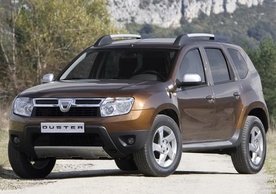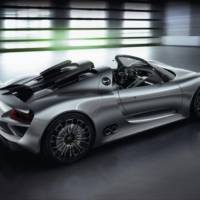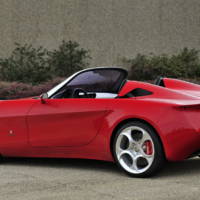The 2010 Dacia Duster Price was announced today by Renault. The budget off-roader is being presented at the Geneva Motor Show and market launch will initially start with Europe at the end of March and then gradually extend in Turkey, Africa and the Middle East.
The Dacia Duster price starts at 11,900 Euro for the two-wheel version while the Dacia Duster 4×4 price is starting from 13,900 Euro.
The two engines choices available for the Dacia Duster SUV are the 1.6 litri 16 valve petrol unit that produces 110 HP and the 1.5 dCi diesel that produces 85 or 105 HP.
The Dacia Duster SUV is being assembled at the company’s Pitesti factory in Romania and extensive details regarding pricing, efficiency and market availability can be found in the official press release below.
Renault press release :
Today’s all-terrain vehicles are often synonymous with bulk, but Dacia Duster is an antidote to that idea.
With a length of 4.31 metres and a width of 1.82 metres, Dacia Duster is very compact. Its Megane-size
proportions ensure that it is as at home in built-up areas as it is off the beaten track. While it clearly
belongs to the world of all-terrain vehicles, Dacia Duster displays attractive lines.
Dacia Duster is unmistakably a 4×4. From the front, it exudes an impression of toughness: the wide
wheelarches, the imposing lines of the chrome grille and the sump guard clearly emphasise the 4×4 DNA of Dacia Duster. Seen from the side, the high ground clearance, clearly defined wheelarches and protective mouldings encourage the driver to tackle even the toughest roads and tracks.
With the Look Pack, owners of Dacia Duster can enhance the vehicle’s good looks. This pack includes inch aluminium alloy wheels, roof bars, extra-tinted rear glass, and satin-finish chrome exterior mirrors, front and rear skid plates, and sills. A comprehensive range of accessories (including broad door protectors and styling bars) will complete this unique look.
Inside, the elevated driving position provides a better view of potential hazards and improves the driver’s ability to anticipate problems. The interior echoes the core values of the Dacia brand: the dashboard is modern, uncluttered and functional. Its design varies according to version, and several areas can be modified with different colours or surface finishes. Dacia Duster introduces a new Brown trim, while a Leather Pack (seats, steering wheel, gear lever knob) is also available. Particular attention has been paid to its ergonomics to ensure that the controls are conveniently positioned and that driving data is easy to read: the well-placed, intuitive 4×4 control button is a perfect example of this.
… with genuine go-anywhere ability
Dacia Duster was designed to cope with all types of road and track, all over the world. In order to meet
these wide-ranging needs, Dacia Duster will be available in both 4×4 and 4×2 form. The 4×2 version has been designed for customers who want good ground clearance and a reassuring elevated driving position, as well as loose-surface ability, but who don’t have a real need for all-wheel drive.
The strengthened underside of Dacia Duster is suitable for loose-surfaces and all-terrain use thanks to:
– ground clearance raised by 210mm,
– short overhangs (822mm at the front, 820mm at the rear),
– big clearance angles (30 degrees for approach angle; 36 degrees for departure angle).
Dacia Duster is a vehicle that is easy to use. It is lightweight for its size: 1,160kg in 4×2 specification and 1,250kg for the 4×4 version1. Combined with compact dimensions, this ensures Dacia Duster is particularly agile.
Dacia Duster has been developed on a platform derived from the Logan family, with a MacPherson-type
arrangement with wishbones for the front suspension. In 4×4 configuration, the rear suspension is a
MacPherson-type multi-arm system; for the 4×2 version, the programmed deflection, flexible H-beam
permits greater carrying ability in terms of volume. Both systems allow significant suspension travel for
improved traction and comfort.
Dacia Duster 4×4 is equipped with a new six-speed gearbox with a very short first ratio (5.79kph per 1,000 rpm). This simple solution allows the vehicle to travel at very slow speed on uneven terrain, and improves performance as you pull away from standstill with heavy loads or on steep slopes. The 4×4 control located on the lower part of the centre console allows drivers of Dacia Duster 4×4 to easily adapt the vehicle’s configuration to their needs. This control permits three modes:
– In AUTO mode, the front/rear torque split is calculated automatically as a function of available grip. This mode has been developed to provide the best compromise between road holding and traction, no matter what the level of grip may be. In normal conditions, the torque is transmitted through the front wheels only.
If traction is lost, or when grip is at a premium, some of the torque is transferred to the rear axle. This split is performed by an electromagnetic torque converter supplied by Nissan.
– In LOCK mode, the driver electronically locks the transmission in 4×4 mode. In this mode, throttle control and braking are also adapted for 4×4 use. This mode is recommended when grip is low (snow, mud, dirt, sand) and at low speed.
– In 4×2 mode, the transmission is locked into two-wheel drive. This mode is suited to driving on good
roads and reduces fuel consumption and CO2 emissions.
A 100% DACIA 4×4 WITH ALL THE BRAND’S ACCLAIMED ADVANTAGES
Duster, the sixth vehicle in the Dacia range, stay’s true to the philosophy and values of the brand. Dacia Duster offers unbeatable interior space for its price, as well as low running costs thanks to thrifty fuel consumption, low maintenance costs, high levels of safety and reliability in all conditions. Dacia Duster perfectly embodies the brand values of reliability and affordability, while at the same time shaking up the market, a role that has helped forge Dacia’s reputation.
Unbeatable space for its price
Although Dacia Duster’s price is comparable to that of a city car, its exterior and interior dimensions are
more akin to those of compact cars in the next segment up.
Dacia Duster can comfortably seat up to five adults and offers both front and rear occupants the same
amount of space as the Dacia Logan saloon.
Dacia Duster’s boot capacity – up to 475 cubic metres VDA (depending on version) – is also very
competitive given the vehicle’s compact dimensions. With the rear benchseat folded, Dacia Duster offers an impressive carrying capacity of up to 1,636 cubic metres VDA (depending on version). Reliable, economical, low-emission engines Dacia Duster will be available with a choice of three powerplants for both the 4×2 and 4×4 versions: one petrol engine (1.6 16V 110hp) and two diesel engines (dCi 85 and dCi 110). The strengths of these engines have already been demonstrated under the bonnet of many Renault group vehicles.
These engines are a perfect fit for the criteria of cost, reliability and easy maintenance that are hallmarks of the Dacia brand.
Combined with Duster’s low weight, they offer low fuel consumption and impressive ecological credentials. The dCi versions emit from 135g of CO2/km for the 4×2 version (which qualifies it for theDacia eco2 signature) and from 145g of CO2/km in the case of the 4×4 version.
Economical to buy and run
Servicing and maintenance costs have been significantly reduced thanks to extended service intervals
for oil changes, and brake pad and tyre replacements. The useful life of the air filters has been extended to 90,000km/four years for petrol versions, while that for diesel it has gone from 40,000km to 60,000km.
Safety, an essential priority
Dacia Duster benefits from Renault’s acclaimed expertise in the area of safety,
Dacia’s 4×4 features Bosch 8.1 ABS, as well as EBV electronic brakeforce distribution and emergency
brake assist.
Dacia Duster is the brand’s first vehicle to feature ESC as an option on certain versions, as well as CSV
understeer control and ASR traction control. This option also allows torque to be transferred away from a
spinning wheel in 4×4 mode to improve traction when diagonal wheel spin occurs.
On the passive safety front, Dacia Duster is fitted, as standard, with two front airbags (depending on
market) and three-point seat belts with load limiters for the front seats, to which pyrotechnic
pretensioners can be added. Depending on the version, two lateral head/thorax airbags are fitted in
addition to the driver and passenger front airbags.
Dacia fundamentals: reliability and strength
Like all the vehicles based on the Logan platform, Dacia Duster has been engineered to deliver the brand’s hallmark strength and reliability.
Particular attention has been paid to anti-corrosion protection thanks to several measures:
– wax-injected underbody and opening panel hollow sections,
– mastic sealing of exterior joints,
– additional wax treatment of underbody mechanical components,
– stone chip protection for underbody, sills and wheel arches.
The 4×4 running gear uses tried and tested components, sourced from the Alliance (Nissan rear axle and coupling, new six-speed TL8 gearbox derived from the TL4 gearbox that has been well-proven in the Renault and Nissan ranges).
In order to underline its high build quality, Dacia Duster is backed up by a three-year or 100,000km
warranty in the majority of its European markets.
A VEHICLE WITH GLOBAL AMBITIONS
Duster is an international vehicle, both in terms of its markets and production. It will be rolled out
progressively in different global regions in the same way as Logan and Sandero.
Launched from spring 2010 in the brand’s main markets Duster will be launched with Dacia badging this spring in Europe, Turkey and the Maghreb region (Algeria, Morocco.) It will complete the Dacia range, which is enjoying growth in the majority of these markets. Apart from the three vehicles aimed at the private sector – namely Logan, Logan MCV and Sandero – Dacia has also staked its claim in the light-commercial sector with Logan van and Logan pick-up.
From June 2010, Duster will also be available – badged as a Renault – in the Ukraine, the Middle East
(Jordan, Syria, Lebanon and Egypt) and other African countries.
The Pitesti factory (Rumania) will supply all these markets, whether Dacia- or Renault-badged. The
Romanian plant has an annual production capacity of 350,000 vehicles and will continue to produce the brand’s other models.
In 2011, Renault Duster will be launched in Brazil, Russia and the Gulf states.
It will be built alongside Logan, Sandero and Sandero Stepway in Curitiba, Brazil, for distribution in Brazil, Argentina, Mexico and Chile. Duster will later be manufactured at the Avtoframos plant in Moscow, Russia.
It will be distributed in the Gulf States, supplied from the Pitesti factory.
THE GENESIS OF DUSTER
A global project to meet an unsatisfied demand
The Duster project began with a simple premise: there is a genuine need around the world for a
comfortable, robust and affordable 4×4. However, this demand is not currently being met. Aware of
this, Dacia developed an all-terrain vehicle aimed primarily at emerging markets. The needs of European customers were also taken into account from the start of the project.
– In emerging markets (Russia, Brazil, etc.), the middle classes aspire to own a modern car that reflects their social status. At the same time, they want a strong car which is both reliable and versatile, capable of withstanding extreme climatic demands and conditions that can be tough and varied (long distances, mountainous terrain, rough tracks, urban driving, often within large conurbations, etc.). The current offer is largely dominated by imported SUVs, which are frequently beyond the means of these middle classes.
– In Europe, the success of Dacia has demonstrated that a market exists for modern, reliable and
affordable cars. While the existing range of 4x4s and SUVs is very large, it neglects the market for
functional and affordable all-terrain vehicles, favouring instead showy SUVs, which are expensive
and often poorly adapted to all-terrain use.
Collaborative design between France and Romania
The Duster project marks another milestone in collaborative engineering between Renault Technologie
Romania (RTR) and Le Losange (new name of Renault’s Technocentre site near Versailles) in France. The
design process began at Le Losange, but Renault Technologie Romania engineering resources were
devoted to the Duster project from the beginning. Le Losange and Renault Technologie Romania
collaborated closely to make the vehicle production-ready. From the stage of the second fleet of prototypes (roughly one year before the launch of Duster), the nerve centre of the project moved to Romania to be closer to the factory.
Vehicle design was conducted at Le Losange, in cooperation with Renault Design Central Europe (RDCE,
the satellite design facility in Bucharest).
Manufactured at the primary factory in Romania
Duster arrived at the Pitesti factory in April 2009. This process was facilitated by a new production line for special prototypes, which can be used for every model variant produced and which is managed directly by Renault Technologie Romania. This production line is located within the factory, making it easier to train the assembly staff. Duster necessitated several modifications to the production lines in Pitesti: a new body shop was built specifically for this model; the assembly line was modified for the new powertrains and 4×4 running gear, while revisions were made to the supply logistics and storage of raw materials in the metal stamping process, in line with the overall factory management scheme. In all, six different body styles are now produced on the same assembly line.
Investment on a reasonable scale
In total, €290 million was invested in the development of Duster, and its production at Pitesti. This includes the cost of the new TL8 gearbox (manual, six-speed, 4×4) and the forthcoming range of Euro4 and Euro5 engines. Of this total, just under €70 million was invested in the production facility.
A good level of carry-over reduced the overall level of investment: in total, just over 50 per cent of
components come from other vehicles in the Dacia and Renault ranges (engine and gearbox, for example).
The maximum production capacity at Pitesti is 25 Duster vehicles per hour. In time, Duster could account for over one third of total production at Pitesti.
DACIA DUSTER CONTESTED THE “TROPHÉE ANDROS” ICE-RACING SERIES IN THE HANDS OF
ALAIN PROST
The competition version of Dacia Duster made its debut in the hands of Alain Prost in the opening round of
the 2009/2010 Trophée Andros, at Val-Thorens, France, on December 5-6, 2009.
Alain Prost finished second with his Dacia Duster in the overall standings of this winter’s seven-round
Trophée Andros.

02 Mar 2010
0


